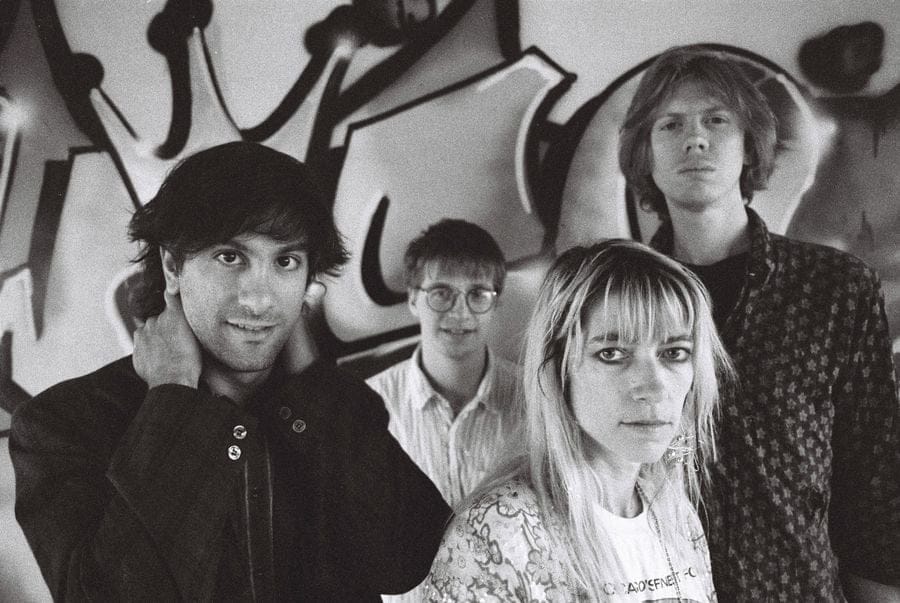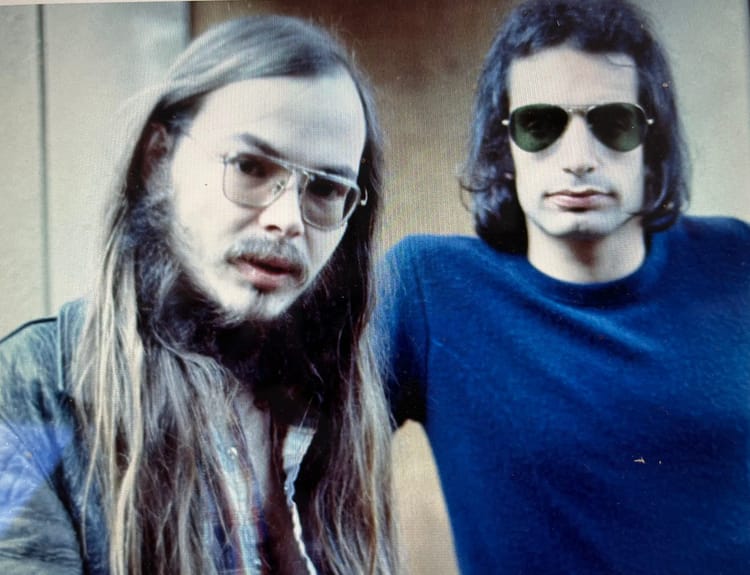Sonic Youth, pt. 1: Anthony's Album Guide

My handy-dandy super-subjective rating scale is explained here. Pt 2 is here. I'm ignoring the band's live releases as they're mostly archival or obscure. But there's plenty out there if you want them.
Sonic Youth EP (1982) 6
Confusion Is Sex (1983) 7
Kill Your Idols EP (1983) 7
Bad Moon Rising (1985) 9
EVOL (1986) 8
Sister (1987) 9
Master-Dik EP (1988) 4
Daydream Nation (1988) 8
Goo (1990) 7
Dirty (1992) 8
The core of New York noise-rock godparents Sonic Youth was an art school girl named Kim, her poetry-loving punk boyfriend Thurston, and a Deadhead Thurston knew named Lee. Kim Gordon didn’t really know how to play bass, but Thurston Moore and Lee Renaldo were arty enough to play in Glenn Branca’s guitar orchestra in Soho. All knew that unschooled musicianship could be a virtue in the early ‘80s No Wave scene, where cultured but chaos-loving kids like them dreamed up scary, new noises for a world where RISD grads like Talking Heads were Top 40.
Sonic Youth in 1983, back when the singer wore glasses instead of the drummer!
Their self-titled EP couldn’t have impressed many in 1982, when minor key downstrums, queasy chords and amateurish vocals were commonplace anywhere you’d find Sonic Youth EPs. Drummer Richard Edson’s attempts to bring art-funk percussion into the mix tend to sit awkwardly on top of the mix. But the juvenilia is cute when it fails to be creepy, especially on the live tracks that more than the double the length of the reissue, Edson rumbling more than percolating. Instrumental rave-ups like “Destroyer” are an early indicator that, for all the talk of deconstruction and transgression circling the band, Lee and Thurston’s tastes actually met around the elegant crescendos on Television’s Marquee Moon.
With future Bad Seed Jim Sclavunous taking over the rumble seat from Edson (soon followed by future Pussy Galoree Bob Bert), the band’s aesthetic coalesces on Confusion Is Sex. Branca-inspired tunings make the guitars even more anxiety-inducing, Moore and Gordon brave enough to holler over the ruckus. Openers “(She’s In A) Bad Mood” and “Protect Me You” would make a killer single, Moore’s macho pride ironically insecure compared to Gordon’s fantasy of endangered innocence, the band confidently amping the drama behind both. But the Stooges cover that follows grows less subversive by the year, and when Gordon screams “I’ll shake off your flesh!” she might as well be Alice Cooper. Side B is art-punk clatter unlikely to alienate or impress anyone more than Side A. Gordon’s “Protect Me You” led the Kill Yr Idols EP, but the band’s first novelty jingle is the title track, Moore pooping on a Village Voice review section while the band imitates a melting cassette of the Kingsmen.
"Death Valley '69"...you couldn't make this today! Well, you could. But they'd call you tacky.
Bad Moon Rising is where the band truly blossoms. The sky rips open with impressionist, psychedelic beauty on the intro “Intro” - “Intro”! - before Gordon and Moore mewl about sex, drugs and politics over eerie, cascading sheets of warped sound, Iggy‘s influence represented on a hissing tape in the distance. And just when returns start to diminish, they bring out Lydia Lunch for an epic Manson Family exploitation duet the actual Angelenos in X were too classy to provide even when they sold out. Whether or not Sonic Youth were ever your personal icons of cool, Bad Moon Rising is their most transcendent attempt at terror. It’s bad (road) tripping with your first love, unsure if the American zombie nightmare around you is hilarious, hell or both. The CD adds Gordon’s outstanding singles “Flower” and “Halloween,” conflicted mirror images of sexual assertion and surrender, but also Moore’s painfully accurate “Satan Is Boring.”
Downtown trash-rock staple Bert then left, replaced by young spectacled powerhouse Steve Shelley of Michigan. Sonic Youth soon signed to SST, excited to achieve We’re An American Band (Of Subcultural Renown) Status. Their label debut, EVOL, is a slightly more professional Bad Moon Rising, with Gordon’s “Starpower” and Moore’s “Expressway To Yr Skull” explosive fuckfests where irony exists but doesn’t get in the way of a goth-adjacent good time. Ex-Crucifuck Shelley speeding up the songs and less centered on toms, Sister finds the band less spooky but arguably more disorienting. It’s driving your car too fast at night (while on drugs) instead of facing a slasher in the backseat (while on drugs). Overloaded old-school tube tech, plus those trademark tunings, keeps the riffola from ever getting commonplace, even as they blast and blitz in ways a Deep Purple fan would probably appreciate.
Sonic Youth...the rare band you can't blame for looking at their hands. All those tunings!
The title track of Master-Dik provides an amusing coda to the Sister CD, Moore barking over Kiss clips like that’s all it took to make Licensed To Ill, Dinosaur Jr’s J Mascis soloing along cuz why not. The EP’s B-sides weren’t included on the Sister CD, and that’s good. (Joined by Minuteman Mike Watt as Ciccone Youth, the band released further hip-hop sound collage experiments and such on The Whitey Album, which you’re welcome to check out if I haven’t recommended enough here).
Still growing as SST started to shrink, the band gave Daydream Nation to the almost-major Enigma Records, its double-disc ambition and heartwarming underground rock anthem “Teen Age Riot” enough to nearly top the Village Voice’s Pazz & Jop poll. I long found it too much of a good thing, but - as with The Cure’s Kiss Me, Kiss Me, Kiss Me - I’ve belatedly discovered it’s best experienced as nicely-paced 2LP rather than an unbroken 1CD. Still, each 17-minute side says the same thing: swirling, slightly subversive rock majesty! Yeah!
"Teenage Riot"...the rare video that should come with citations.
Needing new worlds to conquer (and tired of indie label accounting), the band signed to undeniably-major Geffen, giving the label cred despite that whole “let’s sue Neil Young for being weird” thing. Goo peaks high: opener “Dirty Boots” reveals Moore now assuredly amorous, and Gordon’s frank consideration of intersectional objectification on “Kool Thing” doesn’t keep the guys from wagging their tongues and barreling through a harmony guitar break. The Ranaldo showcase “Mote” reveals winsome melodic gifts, and “Mary-Christ” is a blast, but the remaining tracks are cutesy filler or retreads. And I’m still unconvinced by Gordon’s thespian skills on the Karen Carpenter fantasy.
(Fun irony alert! While the Raymond Pettibon drawing on cover of Goo was meant reaffirm their underground bonafides, it’s now more famous than any song the band’s recorded. Also, thanks to the movie Juno, the band’s most famous Carpenters tribute is sung by Thurston.)
The romantic video for "Dirty Boots," before you could get Nirvana shirts at Target.
Goo broke the US Top 100 and the band opened for Neil Young & Crazy Horse, suggesting they’d made it to the big leagues. Then Nirvana, a Seattle trio they convinced to sign to Geffen, released Nevermind, topped the charts, and revealed how big the leagues could get for American “alternative” acts. Working with Nevermind producer Butch Vig, the band doubled down on Goo’s snarky social commentary and guitar epics for 1992’s Dirty, albeit with a more pronounced groove. The album would be even more of a step up if it wasn’t twenty minutes longer than Sister. Despite the CD-era bloat, Ranaldo almost quit the band before they let one of his songs into the fifteen included. Ironically, his “Wish Fulfillment” is more memorable than most of Gordon’s tracks, marred by experiments with clenched-butt yarl I may be too male (or yarl-skeptical) to find empowering.
Though Dirty offered modern rock radio some solid power ballads (“Theresa’s Sound-World,” “Sugar Kane”) and goofball punk (“100%,” “Youth Against Fascism”), the format shrugged and waited for Candlebox and The Offspring to show up instead. Nonetheless, the hype was strong enough that I was one of three kids at my middle school who bought SY’s yarn puppet t-shirt at the mall Disc Jockey and wore it the first day back from summer vacation (I wouldn’t buy Dirty itself for a couple years). Decades later, I saw the same image on the back of a bus, promoting a Mike Kelley exhibit at the David Geffen wing of MOCA. I’m hoping it’s the most I’ll ever identify with Don Henley.
When Sonic Youth made afternoon MTV...and ironically were the oldest people in the room.
In Part 2: Nirvana’s older siblings become parents, and their fans become cranky kids.
Sister and Bad Moon Rising are respectively at 110 and 208 on my Top 300 Albums of All Time. I'm telling you this because I've found people are more inclined to discuss and share reviews if there's a quantitative element at the top or bottom they can easily debate. Prove me right! Direct correspondence can be shipped off to anthonyisright at gmail dot com.




